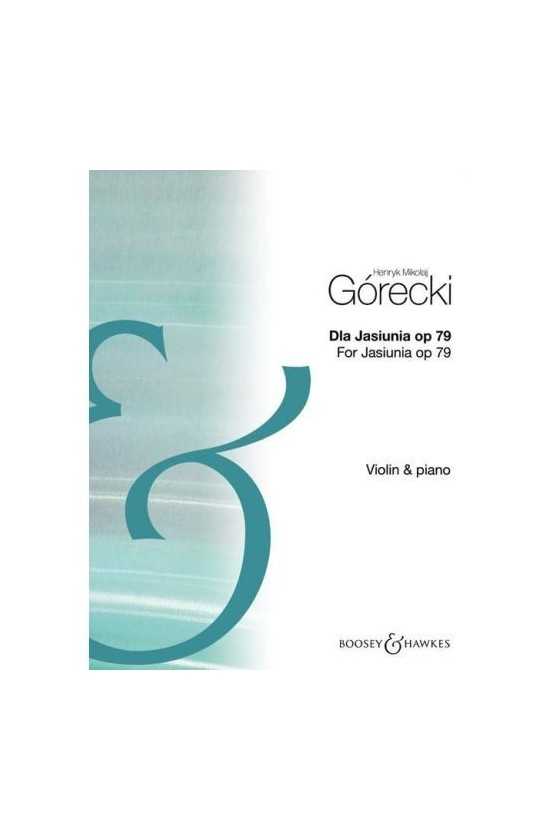Górecki, Henryk
Henryk Górecki, a contemporary classical music composer from Poland, left an indelible mark on the world of music with his unique and influential compositions. His journey from the avant-garde to sacred minimalist styles captivated audiences and earned him both critical acclaim and commercial success. In this article, we will delve into the life and music of Henryk Górecki, exploring his early influences, compositional techniques, and the impact of his most famous work, Symphony of Sorrowful Songs.
Early Years and Influences
Henryk Górecki was born on December 6, 1933, in Poland. During the post-Stalin cultural thaw, he emerged as a vital personality of the Polish avant-garde. Influenced by composers like Luigi Nono, Karlheinz Stockhausen, Krzysztof Penderecki, and Kazimierz Serocki, Górecki's early works were characterized by dissonant modernism and adherence to serialist techniques influenced by Anton Webern.
In the late 1950s and early 1960s, Górecki's avant-garde compositions, such as "Epitaph," "First Symphony," and "Scontri," showcased his mastery of twelve-tone and serialist techniques. His growing reputation as a composer was solidified when his piece "Monologhi" received first prize at the Warsaw Autumn festival, establishing him as a leader of the Polish Modern School alongside Penderecki.
The Geometrical Phase
During the 1960s, Górecki's compositional strategies were heavily influenced by geometry, leading to what Danuta Mirka termed the "geometrical phase" of his work. This phase can be divided into two parts: the phase of sonoristic methods (1962-63) and the phase of reductive constructivism (1964-70). Górecki explored axes, figures, and patterns in his compositions, emphasizing symmetry and geometric structures.
As Górecki progressed in his career, he began to move away from his radical modernist style and embraced a more classic and romantic form of expression. By the mid-1970s, his compositions underwent a significant shift, characterized by powerful emotions, rhythmic intensity, and vivid orchestration. This marked a departure from his earlier cerebral and sparse works, as he embraced a more accessible and expressive musical language.
The Shift to Sacred Minimalism
In the mid-1970s, Górecki transitioned to a less complex and more contemplative style, often referred to as sacred minimalism. This shift can be observed in his transitional works, Symphony No. 2 and Symphony No. 3 (Symphony of Sorrowful Songs), which became some of his most celebrated compositions.
Symphony of Sorrowful Songs, composed between 1976 and 1977, achieved remarkable recognition years after its creation. Its haunting melodies and poignant themes resonated with audiences worldwide. Górecki's composition gained immense popularity when a recording featuring soprano Dawn Upshaw and conductor David Zinman was released in 1992, selling over a million copies. This commercial success was unprecedented for a symphonic work by a 20th-century composer.
Global Recognition and Late Works
Despite the worldwide recognition Symphony of Sorrowful Songs brought him, Górecki remained committed to his artistic integrity and refused to recreate his prior success or compose for financial gain. He continued to evolve his musical style through various unique eras, from the choral hymn "Beatus Vir" in 1979 to the 1981 composition "Miserere" and the requiem "Good Night" in 1993.
Górecki's later works showcased his ability to create deeply moving and introspective compositions, often drawing inspiration from Polish folk music and religious themes. His music captured the attention of Australian filmmaker Peter Weir, who included a piece of Symphony No. 3 in his 1993 film "Fearless," further expanding Górecki's reach and influence.
Legacy and Influence
Henryk Górecki's contributions to contemporary classical music have left an enduring legacy. His ability to blend intricate counterpoint with repetitive melodic fragments and harmonic patterns showcased his mastery of compositional techniques. Górecki's unique approach to composition, characterized by relative harmonic and rhythmic simplicity, established him as one of the founders of the New Polish School.
His influence can be seen in the works of countless composers who have been inspired by his distinct style. Górecki's exploration of minimalism and powerful emotional expression continues to resonate with musicians and audiences around the world.
Conclusion
Henryk Górecki's life and music exemplify his unwavering dedication to artistic integrity and his ability to evolve as a composer. From his avant-garde beginnings to his transition into sacred minimalism, Górecki's compositions have touched the hearts and minds of listeners worldwide. His most famous work, Symphony of Sorrowful Songs, brought him global recognition and cemented his place in the pantheon of contemporary classical music. Henryk Górecki's legacy lives on, inspiring future generations of composers and leaving an indelible mark on the world of music.


